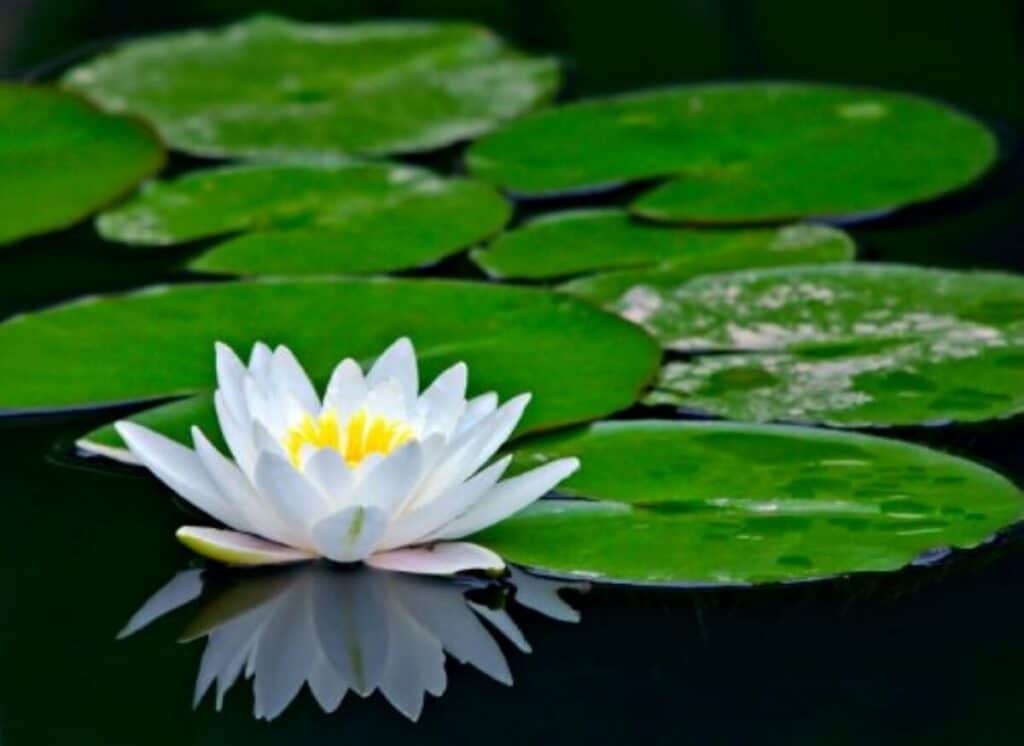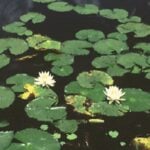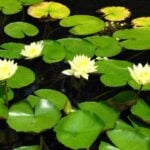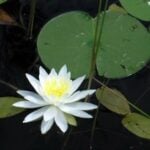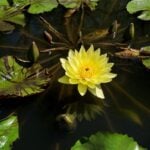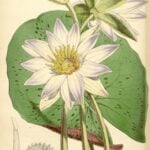Water Lily
Other Common Names: lilies, lily pad, American white water lily, elegant water lily, yellow water lily, Mexican water lily
(Nymphaea odorata, Nymphaea elegans, Nymphaea mexicana)
Native
Water lilies are rooted with large round leaves that have a notch in them; they flower in summer.
Description
Water lilies have large round leaves that are green on top, reddish or purple on bottom, and have a slit in the middle. Leaves float on top of the water and grow six to 12 inches in diameter.
Water lily leaf stalks are round and approximately one inch in diameter. Flowers emerge from their own stalks connected directly to the rhizome.
Water lily flowers are typically white or yellow, rise above the water with eight to 25 petals around a yellow center, bloom in morning and close mid-afternoon.
Stems are thick, green, and rooted to the bottom in up to five feet of water. Lily rhizomes are massive. The thick stems and extremely long root systems make cutting or hand pulling nearly impossible.
Yellow lotus and water lilies can be confused. The main differences are in the flowers and leaves. Lotus flowers have a cone shaped seed pod with a flat top. The leaves of lotus are attached in the middle with no slit and can stand above the water with a cupped shape.
Deer sometimes eat the leaves of yellow water lilies, but most often ducks eat the seeds and rodents such as muskrats and nutria eat the roots. The large leaves of lilies offer shelter for largemouth bass and sunfish. Lilies are popular ornamental plants for water gardens but are highly invasive.
Management Options
Click here for more information on how to control water lilies.
Location
Water lilies can be found across the United States.
Propagation
rhizomes, seeds
Management Options
Click here for more information on how to control water lilies.

